We’d like to welcome Richard to the fold at Canon Rumors, one of two new writers that you will see here at Canon Rumors. You may remember Richard from his time running and writing at Canon News. The financial overlords have finally started to move forward with investing in the evolution of the site.
Richard’s role at Canon Rumors will be making sense of patents and other technical things (He has a much better engineering brain than the rest of us). as well as writing opinions on the industry. What he writes about will likely evolve over time.
As with all opinion pieces, it’s an opinion, we all have them. Please be respectful on the forums if your opinion differs, but we feel that we have a pretty great community here and that shouldn’t be much of an issue. In the end, discussion and constructive debate is what moves ideas forward, and these companies are reading and listening to what the outside world has to say.
Thanks to Richard for joining the team.
Craig // Editorial Director & Founder // Canon Rumors
Opinion: The difficulty facing Canon (and everyone else)
Reading through the interviews from the Photo and Imaging 2023 show felt like I was back in the early days of the EF mount. But it’s not the late 80s and early 90s when FD mount users were picking their jaws up off the floor. Back then film was still king, Velvia was amazing, Tmax was made by actual wizards, and new and exciting technologies such as USM and IS were coming out. All the major players were still in the game. It was a great time for the camera companies, carrying through all the way past the first decade of the new millennia. They could literally do what they wanted when they wanted. Money was to be made.
It’s not the case anymore now though. Now the camera industry is facing existential threats from across multiple different sources. Minolta struggled and was bought out by Sony. Olympus was sold off and rebranded. Nikon at times has looked to be on life support. Even Canon has struggled with profitability. Canon has spent most of its cash war chest on expanding its business to other segments.
I am living in one of, if not the busiest tourist area in the world (Bangkok) which receives over 22 million visitors a year (for comparison, New York City receives around 13 million visitors per year). I rarely see an ILC camera anymore, meanwhile, 5 to 10 years ago, you’d see cameras everywhere. Cameras in terms of ILCs are simply being left at home. Concerning? You bet. There are at least two cores reasons that Canon seems to be addressing in at times, puzzling ways.
Good enough and the last camera syndrome
We’ve all heard about the smartphone being good enough for the average level of photography. I think it’s common knowledge that this is a true statement for most people. Computational photography, and bigger and better sensors each year have made phones come a long way in the last 2 decades. Also, phones are just less obtrusive to take pictures with and have the workflow convenience that no ILC can match.
There is also the last camera syndrome where your current camera is the last camera you really need to buy. The outside threat from smartphones combined with the fact that users are satisfied with what they already have is the stuff of nightmares for the camera industry. People don’t need cameras any better than they have anymore as the newer models have a diminishing amount of incremental improvements. Sooner or later you make a camera good enough that people simply are satisfied with using it until it breaks.
Of course, we are in the age of mirrorless, so that’s an even longer time before failure because of the lack of internal mechanics. Now the mechanical dependencies are reduced even further by electronic shutters. Cameras will last much longer and are far more capable. We should commend the camera companies for making cameras better, almost completely silent, and more reliable – it is great for us as consumers, but it’s a large problem for the camera companies.
ILC Cameras just aren’t convenient anymore
This used to be people comparing mirrorless to DSLRs. No one wanted to carry around a large DSLR because people that did were dinosaurs, and DSLRs were old ancient technology, too heavy, and so on. Amusingly, now the mirrorless segment is hearing the same comments but directed by those using smartphones for their photography. Of course, it didn’t help that Canon, Nikon, and Panasonic didn’t concentrate significantly on small and good lenses as they concentrated their efforts on who could make the biggest 85mm prime.
There is also an elephant in the room when it comes to ILC cameras in general, whether it be DSLR’s or mirrorless, and especially full frame cameras. Airlines especially over here in Asia are getting far more serious about your carry-on luggage, limiting it very commonly to 7kg (15lbs for my American friends). This is compounded for ladies because that 7kg also includes their personal carry-on item namely a purse. In many scenarios having an ILC and a wide variety of lenses just isn’t realistic to travel with since no one in their right mind is going to pack them in their checked baggage.
So instead of being brought for their vacation, people simply leave the camera at home. The ILC is simply too heavy and too much hassle to deal with when traveling and people are looking at their cameras on their phones being far more convenient and good enough for what they require.
This basically happened to me personally. Even with my EOS-M system, it would weigh in at a total of around 1.5kg. Including my empty carry-on backpack bag of 1.5kg, which was nearly 45% of my carry-on weight limit, not including my laptop, various batteries, etc. It was difficult to try to stay under 7kg. Craig used to bother me all the time about my EOS-M system, but it was the only reasonable kit I could come up with and still have flexibility while traveling. Ultimately, it was still a hassle. After 3 decades of taking an ILC everywhere when I travel, more and more I optioned to just leave it at home. Navigating airports and airlines, security lineups, and investigating each and every airline’s carry-on policy down to the fine print was just too much of a headache. These days I travel without an ILC. I still bring my full spectrum converted pocket camera because that is something you cannot get from a smartphone. But for traveling I just don’t see it being worth the aggravation to pack an ILC anymore. This is from a Canon user that has used Canon Cameras since the EOS-3 and Elan IIe days.
I’m sure I’m not alone in this. The diminishing returns of an ILC combined with the hassle of traveling with one just simply don’t make sense anymore for the vast majority of people.
This is what is facing the industry, and really it should come as no great surprise to anyone reading here. We’ve all seen the decline in the industry.
What is Canon trying to do to us?
They have certainly tried a few things. They have trialled subscriptions on their software and even closed off the RF mount to squeeze as much profitability as they can from the RF mount. They have been aggressive in both their profitability and their market share. Let’s face it – they dominate.
With more of the profit percentage being around lenses, Canon wants to make sure that if you purchase your Canon camera, you are going to equip it with as many Canon lenses as possible. Knowing full well, that you may never purchase another camera body again, and if it is the last Canon camera you purchase, they don’t want it to be cheap either. They have halfheartedly created the RF-S system and quietly discontinued the EOS-M system. We’ve all read the key statements in Canon’s financials “improving the product mix” “focusing on high-end lenses” and so forth. While they have developed the RF-S system, the lenses available almost ensure that you are certainly going to have to purchase full-frame lenses for it. Once you do that, you may as well purchase a full-frame camera and more full-frame lenses, yes?
Depressingly hiding what they are planning for their releases plays into this desire to have RF-S users purchase full-frame lenses. I don’t like it, because it preys on our indecision and can ensure we make bad purchasing decisions not knowing what is available in the future. But it does meet Canon’s goal – to get us to purchase more lenses. Canon gave the reason as they want to surprise us but I think that’s a PR statement. I think they want us to purchase lenses that perhaps we may not need to purchase if we knew what was coming out over the next 2 years. I could be paranoid about this and need to adjust my tin foil hat, but with the rest of the industry trending to roadmaps and transparency, Canon is absent. Now granted we have awesome resources like Craig and Canon Rumors to fall back on but that doesn’t replace roadmaps from Canon.
This lack of transparency strategy though also leaves Canon at a strategic disadvantage and also leaves us as their customers at a significant disadvantage as well. Knowing what other companies have, and will have via their published roadmaps and Canon lacking any roadmaps creates indecision. With this indecision, consumers may seriously think about switching to Nikon, or potentially the absolute horror of finding a lens they need on Sony’s roadmap and thinking of switching to Sony. Even though, unbeknownst to the consumer, Canon may indeed be releasing a similar lens in the near future. A professional using Nikon equipment has a better understanding of what they will have available for them and they can plan around that.
Users of Canon APS-C mirrorless are left in a total mess as they are left wondering where things stand with the RF-S users and especially those still using EOS-M cameras. EOS-M users had optically good Canon EF-M lenses, excellent Sigma AF primes, and great bang for the buck Viltrox AF primes to use on the system. On the RF-S system, they have a few lenses and crickets. The lack of information from Canon is considerably complicating the decision-making process of one of Canon’s largest groups of users that need to make a very difficult transition to the new RF mount. This is doubly unfortunate because users wanting a capable lightweight travel system, RF-S with some excellent small lenses would be exactly what would be required as airlines get tougher on carry-on restrictions.
My thoughts and wishes
I hope that the latest rumors of Canon licensing the mount continue to gain steam. I also hope that the industry keeps on making Canon answer the tough questions of why they are the only mount that requires rigorous approval of licenses for use of the RF mount system. I hope they also continue to ask about why they are not offering us any future roadmaps. I could even understand if the roadmap details are a bit vague. Both questions may not seem to be in Canon’s best short-term interests to do so given the decline in the industry, but they can help keep those of us that remain. We all could be a little happier as we all attempt to explore how we further our photography journey whether it be as a hobby or profession.
The powers that be here told me to write my own opinion stuff! It’s a book, also forgive me in advance, after stopping with CanonNews, I got away from writing anything camera related, so this may feel a little rough around the edges. If it sounds like humor, it probably is. I really don’t wear tinfoil hats. I always enjoyed writing these kinds of opinions even if I had to mention EOS-M much to Craig’s dismay ;)
It’s good to be back in the Canon Rumors community.
Header Photo by Julentto Photography on Unsplash
|
When you purchase through links on our site, we may earn an affiliate commission. Here's how it works. |




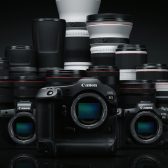
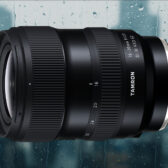
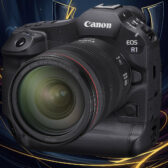
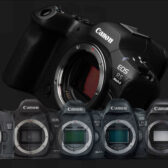

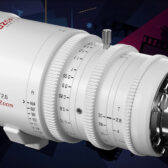


Lenses lenses and more lenses, eh?
But not EF-M lenses
I started my photography journey with the EOS M50 and have graduated to an EOS M6 Mark II as well as an EOS R6. While I love the RF mount lenses that are out (I love the budget primes and have a couple pro zooms) and the EF-M system of lenses, it has been hard to justify putting more money into the system. Back then, I even purchased a Canon SELPHY printer instead of the Fujifilm instant printer.
But last year, I picked up a Fuji body and I have now picked up a Sony body because the lenses are more interesting and more plentiful. I'm looking at Pansonic S series and Olympus m4/3 series as well (the 20-60mm and the 12-100mm f/4, respectively, are so tempting). There are so many exciting zoom options from Tamron (20-40mm F/2.8, 35-150mm F/2-2.8), and so many beautifully-built budget options from Sigma (I-series). Viltrox has put out beautiful lenses (13mm f/1.4, 75mm f/1.2, 16mm F/1.8, and 27mm f/1.2), and Samyang's V-AF series remains very interesting. There are a few issues with the RF budget primes (such as lack of weather sealing and a less-than-stellar AF system), and it just seems like there's so much interesting kit out there that the Canon system won't let us access. I still take my Canon bodies out, but I'm using them less and less. Hopefully Canon can replace our faith in the system soon!
Canon’s marketing is always so bad. The pictures they show are so ordinary. Canon don’t even explain some of their functions etc. Whereas Sony uses the best eye-catching pics from their ambassadors, every product is either the smallest, fastest, lighters or something like that. People wanna feel like they are buying something special and “the best”. Especially when they don’t understand it yet.
If Canon does not offer a clearly and vastly superior platform vs. the Z9 they will have failed.
The issues you raised are pertinent to the photographers' communities. The perceived advantages of a ILC camera over that of a phone camera may have already dwindled to the point where most people who just want to take pictures and videos as a record of their activities will most likely reach for a phone rather than an ILC camera. The convenience of having a recording device that is with us most of the time is compelling. To do photography 'properly' these days would require dedicated planning and post processing work. Unless these are part of the enjoyment of photography, which I guess is for most of us here, it is much simpler to whip out the phone, point and record. Apart from convenience, it is also the case that young people's first encounter with photography and video is most likely through a phone. Given how good the video and image quality phones can produce these days, especially when the social media platforms do not require any better, it is little wonder that ILC photography struggles to compete. Going small and compact is one approach to compete with phones, but perhaps a rethink of the overal ILC approach and pricing could be another. For instance, I can imagine a different pricing structure that see cheap but high quality bodies to get new photographers on board, but aim to sell more lenses (both compact and 'normal' lenses) to subsidise the bodies. Having said this, I do not pretend to know more than Canon, and that they could well have thought through alternative models already and have rejected them for good reasons. Nevertheless, it seems that the ILC companies will continue to find it tough going without a break from the current buisness model. Meanwhile, I am still enjoying the RF system.
However certainly Canon and other manufacturers should lobby the airlines to offer a solution. I’m sure many photographers would pay an extra fee (if reasonable) just to have a secure option. It’s ironic that if I want to take my bike with me, I can, and it’s not that expensive (certainly cheaper than renting for a week). If Canon et al doesn’t then the rumour sites should band together to do it!
And certainly offering smaller but good lenses would be great - Canon won’t likely won’t, but allow Sigma et al fills these gaps. I get their need to satisfy their shareholders…
The article over at peta from Sigma CEO was interesting around lens development. Certainly it seems to be still, despite recent innovations, a lengthy process. Maybe they need to look to see if AI can shorten the process to allow them to release quicker.
And most definitely provide a roadmap, especially if they’re controlling which 3rd parties can release what lenses.
Still, I feel an equally large risk they face is around the software - something they’re not that invested in (not just Canon). You rightly highlight that mobile workflow is very good. It is, and we all use it. But the camera companies still seem to ignore it and still practise, iirc, features missing on different bodies. I doubt, but happy to be corrected, how many people would upgrade their body just to get a few new software features. Yet the manufacturers still seem to think it will encourage us to do so. Offer paid upgrades. If they feel better AF on a R5 mk II will compel me to upgrade from the current body, well it won’t. Better sensor, better digic, better cooling. Better comms. Sure, combined they all might. Of course others here may have a different perspective but I think the camera manufacturers should separate the hardware and the software. I’m fine to pay a reasonable fee to get better AF and some features from the R7 or R6 II
They should look at adding hardware and software to our cameras that make it easy to get photos to other people or sites. Aside from the AF, I don’t think they need to necessarily add computational to the camera unless they’re going to improve battery life considerably. Using your phone however is certainly an option, but only if they get higher speed connectivity. Either way, simply improving the usability and the features in software would keep people in the eco-system.
Yes it means we won’t buy bodies perhaps as often, but perhaps that is the new reality they need to face. Professionals upgrade if there’s a “business case”, enthusiasts (unless they have deep pockets) need something compelling. In between providing those compelling reasons, entice them with software which you can iterate annually and offer it as a subscription or upgrade.
Just my 5c
Meanwhile Nikon and Olympus have less marketing....
Canon has been making cameras for nearly a century and has never had a roadmap.
When it comes to pros Canon has a pretty solid line up.
When it comes to GAS, Canon typically falls down compared to Nikon and Sony.
Those two companies are more into specs for spec sake.
That being said, they still make some compelling products at compelling prices.
People need to revise their idea of a lightweight kit. I see kits including a 600mm f/4 described as lightweight. Is a laptop really needed, or could the images just sit on cards until you get home?
ILCs are for pro’s and enthousiasts who have to or are willing to pay for canon lenses. For anything else people use their phones.
He is right with the "last camera" idea. My 1D X, which came out 11 years ago, is already so good for my needs that a new camera would not help me very much to take good photos.
I do not share his hope that those new cameras will last longer than the old ones. Mechanical stuff may be reduced, but new cameras have IBIS and an EVF. Those are things that might not survive as long as we would hope.
I am aware that Canon probably doesn't care about sold bodies and hence customers that would buy third party lenses, but I still would get the 24-105 L, a couple of primes, and then as things go on maybe even other lenses...
Cheers
The problem these days is whether the checked baggage will get there at all. In DSLR days, I probably wasn’t going to need to charge anyway, but this is no longer true with mirrorless, and that huge R3 charger needs to go in the checked baggage. On the other hand, if my hiking/wet weather gear was in that checked baggage and is lost I would also have a real problem.